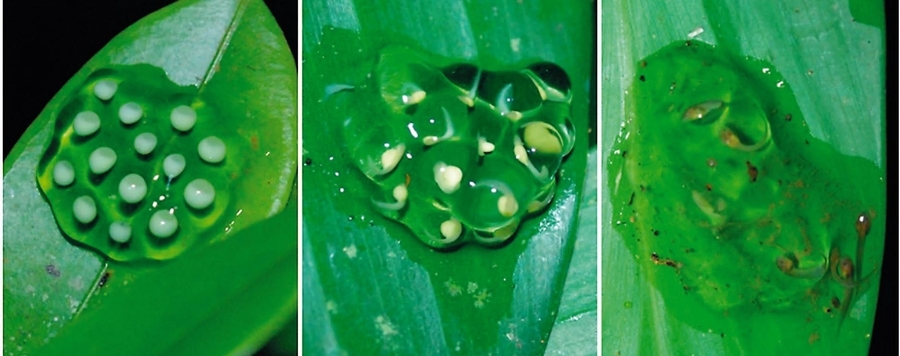
Reproductive biology and phylogenetic relationships of Vitreorana baliomma (Anura: Centrolenidae)
The behaviour, ecology, and phylogenetics of glassfrogs from the Atlantic Forest are poorly understood. To contribute to these three topics, we studied reproductive behaviours, microhabitat use, influence of environmental variables on the activity of adults, and clutch thickness, as well as the phylogenetic relationships of V. baliomma, a key centrolenid species from the northern Atlantic Forest. We sampled two streams in the south of the state of Bahia, Brazil, between November 2018 and April 2019, and measured relevant specimen and environmental variables. Our results include (i) the first observations of female-only egg-brooding in this species, (ii) the statistically significant dependence of reproductive activity on daily rainfall and high humidity, and (iii) that adults use different leaf face for clutch deposition and activity, with clutches being placed on both sides of leaves and at statistically significant lower heights and horizontal distances from water. Maximum likelihood phylogenetic analyses of DNA sequences of three mitochondrial and one nuclear gene (12, 16S, COI, and POMC, respectively) confirmed the phylogenetic position of V. baliomma within the genus. Although our results inferred V. baliomma as sister of V. gorzulae (a Guiana Shield species) and both as sister taxa of all other Atlantic Forest and Cerrado species, these relationships have low support.






